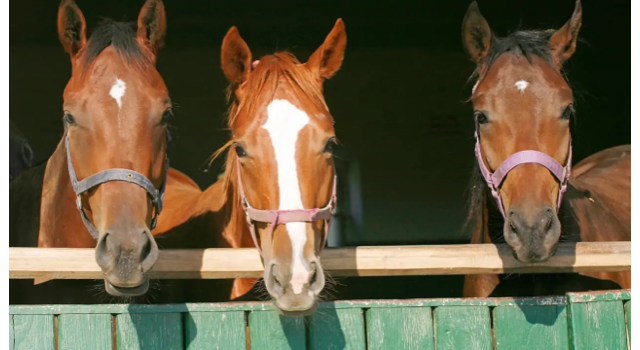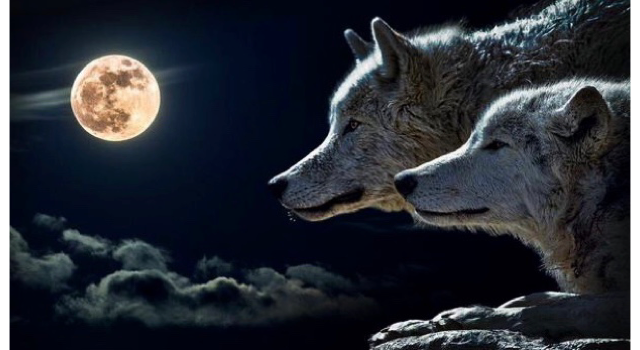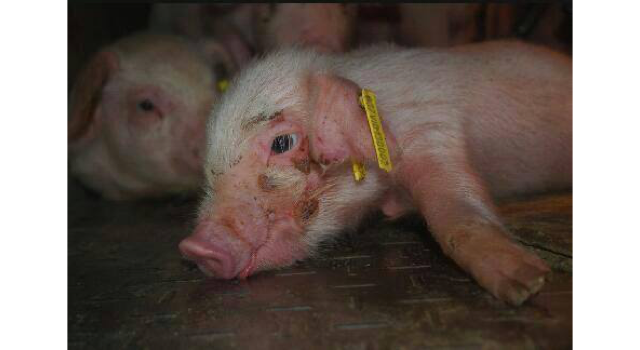Walrus In The Arctic Dies From Bird Flu. Researchers have confirmed the first known case…

Mother Cows Are Distressed When Their Babies Are Hauled Away.
It is now relatively common knowledge that cows do not just naturally make milk, but must be impregnated and give birth in order for lactation to occur, and that calves must be routinely removed in order for that milk to be re-routed for human consumption.
Dr. Lori Marino, a neuroscientist and expert in animal behaviour and intelligence, says:
“There is a lot more social complexity than it looks like when we see a bunch of cows standing in field, it’s not just a bunch of cows standing in a field.”
“Cows have intricate social structures. They have friends, they have relationships. They are not ‘simple’, a word so often used to describe them. And when their babies are removed from them soon after birth, they absolutely care.”
.Undercover footage obtained by Canadian animal law organisation Animal Justice from a dairy farm in British Colombia and broadcasted in part on CTV news last year shows over and over mother cows in distress as their babies are hauled away (along with footage of workers violently beating cows).
Mothers chase after their babies and express vocalizations.
Dr Lori Marino says: “These sounds are not just some involuntary noises. They actually represent emotional states. They don’t bellow all the time. They bellow when something happens that upsets them.”
Dr Lori Marino also said: “As for the calves, they too can show signs of stress upon removal after birth. They show foot-stomping, they pace back and forth, they may urinate. They show signs of psychological and emotional distress. And this makes sense because when cows are born they can walk around on their own, so they have come into the world to quickly learn who’s mum and to follow her around. They are going to be very aware of when something comes between them and their mother.”
As for the common argument that cows are bad mothers, Dr Marino says: “If cows were bad mothers they wouldn’t have evolved, there would be no cows. Cows care very much for their children, they are very bonded.”
( Jessica Scott-Reid, 22.02.2022 ) Source: sentientmedia.org
Farm Animals Are Increasingly Passing Disease To Wildlife.
Catastrophic declines in the number of birds and other wildlife are likely if countries do not act urgently to change the way animals are farmed, wildlife health scientists have warned.
The unprecedented die-off of seabirds from highly pathogenic avian flu (HPAI) being witnessed in breeding colonies across Europe, North America and Africa has been traced back to a commercial goose farm in southern China where a relatively mild bird disease mutated into a killer in 1996.
After spilling into wild bird populations in 2007, HPAI has spread around the world, killing millions of birds and showing no sign of stopping.
Spillovers of disease between livestock and wildlife have increased as intensive farming has escalated to feed growing wealthier human populations demanding cheap meat.
Over the past 50 years, the global population of poultry has multiplied six times, from 5.7 to nearly 36 billion.
The number of pigs has almost doubled, from 547.2 to 952.6 million, and cattle numbers have grown from 1.1 to 1.5 billion.
The risk of spillovers and new pathogens emerging from larger herds and flocks of commercial animals has also grown as intensive livestock farming has been normalised.
These large livestock populations, which are connected through trade, form reservoirs where infectious diseases can evolve and spill over into wildlife, occasionally with devastating consequences.
Ruth Cromie, Councillor for Wildlife Health for the Convention on the Conservation of Migratory Species said: “Farm animals are increasingly passing disease to wildlife”.
( John Vidal, 06.10.2022 ) Source: theguardian.com
Keeping Farmed Animals Indoors Increases The Risk Of Disease.
t’s a tough lesson in how our food choices affect everything else.
Avian flu (HPAI), which now regularly devastates poultry populations around the world, didn’t originate in wild birds.
It emerged in farmed birds during the massive expansion of the poultry industry in China and east Asia at the end of the 20th century.
Now, chickens and wild birds alike have become victims of this most devastating disease.
The rise in intensive chicken farming has provided the perfect breeding ground for new and more deadly strains of disease.
The explosive growth of cheap chicken on supermarket shelves is now coming home to roost.
The low pathogenic version of the avian influenza virus is common in birds, both domesticated and wild.
Its evolution into a much more deadly form is due to the huge numbers of birds kept at close quarters in the global poultry industry.
The science behind the emergence of dangerous disease strains isn’t complicated.
These days, most chickens are crammed in their tens of thousands in each steely-looking barn.
A ‘farm’ can now have any number of these long, low buildings lined up in rows, providing the perfect breeding ground for disease.
Keeping too many animals in too small a space, often in dark, filthy and overcrowded conditions, provides the conditions a virus like avian influenza needs to spread and evolve.
As the virus races through the flock, new, and potentially more deadly, strains can and do emerge.
Contrary to what some in the farming industry want us to believe, keeping farmed animals indoors increases the risk of disease.
With the highly pathogenic bird flu virus now rampant across Britain, Europe and Asia, farms of all shapes and sizes are being hit.
According to the European Food Safety Authority (EFSA), by far the most common reason for the disease spread in poultry is through farm-to-farm transmission.
In other words, it’s being carried on the trucks and boots of the industry.
The shocking reality is that HPAI in Britain and Europe could become endemic in wild birds, causing immense damage to wildlife already fighting for survival.
( Philip Lymbery, 14.10.2022 ) Source: philiplymbery.com
Horses Are Made To Suffer So Animal Farmers Can Profit.
Pregnant Mare Serum Gonadotropin (PMSG) is a fertility hormone used in factory pig farms to synchronize animal births, and increase profits.
Approval processes for a controversial new PMSG product are currently underway in a number of European countries, but in Canada, it is already approved for use by factory farms looking to trick the bodies of mother pigs into having larger litters, as cheaply as possible.
The hormone comes from the blood of pregnant horses, and in 2021 and 2022, Europe-based Animal Welfare Foundation (AWF) and Tierschutzbund Zürich (TSB) visited “blood farms” in Argentina and Uruguay where it is produced.
In a new exposé, investigators found emaciated horses, likely because it is believed that underfed mares produce higher amounts of hormone.
The horses were kept in the blazing sun with no shelter from the elements.
Some of them had gaping wounds and lameness, but no veterinary care was provided.
Pregnant mares were seen to be roughly corralled, hit, and shoved by workers as they were driven into the “blood hall” where their necks were punctured and about 10 litres of their blood was drained into plastic buckets.
The weakened horses were then sent back out into the fields, with no time to recover.
The cruel process is repeated once or twice per week.
After horses are pregnant for about 110 days, foals are systematically aborted, allowing mares to be impregnated twice per year in order to maximise profits.
Being underfed, frequent blood loss, and being constantly pregnant puts a lot of strain on the mares, and when their bodies are no longer able to be impregnated, they are sent to a slaughterhouse or abandoned to die.
The PMSG product from the Argentinian company supplied by these farms is marketed as Novormon in Canada and is authorised and available for use on cows, sheep, and pigs.
( Dan Howe, 18.10.2022 ) Source: animaljustice.ca
Male Calves Are “Waste” In The Dairy Industry.
The demand for cheap milk has led to an industrialisation of dairy farming.
Cows are milked by metal machines and are treated like no more than milk machines themselves.
Their welfare is rarely considered beyond the limited legal requirements.
Most dairy cows are kept inside part or all of the year.
The conditions they are kept in often cause physical and mental suffering.
There can be no soft, clean places for them to rest, leading to a multitude of health issues.
In some countries cows are kept in ‘tie-stalls’ which means they are tethered, either with chain, rope or a metal bar.
They remain confined for 24-hours a day throughout their whole life or the winter season.
Each year, a dairy cow becomes pregnant, either through artificial insemination or mating.
She needs to produce a calf in order to produce milk.
She often spends time straight after birth cleaning her calf, creating that bond which, in the case of many animals, can last a lifetime.
But dairy cows don’t get to keep their calves.
Often within hours of birth, her young calf is taken away.
While female calves are reared for milk production like their mothers, male calves are ‘waste’ in the dairy industry.
They have no value and are either shot after birth (95,000 calves are shot at birth in the UK each year), or sold for veal meat.
Naturally, the calves would suckle from their mother for up to a year and remain closely bonded to her for the years following.
When calves are taken away after birth it causes severe distress for the mother cow and the young calf, just a baby.
Three months after giving birth and losing her calf, a dairy cow is again impregnated.
She will have to go through pregnancy, and the loss of another baby, multiple times in her short life.
Selective breeding of dairy cows has led to a very high yield of milk from each cow.
In fact, milk production per cow has almost doubled in the last 40 years.
The effect on the health of the cows bred for milk has been catastrophic
Undercover investigation footage from across the EU has revealed cows living in squalid conditions, tethered or shackled inside their whole lives.
Some are limping due to lameness caused by poor quality, hard, filthy floors.
These painful conditions will never be treated and often cows are slaughtered because of this lameness.
Investigation footage shows many cows so thin, almost skeletal.
The over-breeding that has led to such high milk yields simply puts too much pressure on their bodies and dairy cows can often suffer metabolic diseases.
Mastitis is another disease common to dairy cows.
The risk of infection from milking machines not properly looked after, or the filthy bedding they are forced to rest in is high.
Mastitis causes painful inflammation of the udder and can even lead to death in some cases.
There is a wealth of video evidence of physical abuse in multiple dairy farms across different countries.
Cows being punched, hit with metal poles and their tails being snapped or cut off.
After around 3 years, way below their natural lifespan of over 20 years, dairy cows are often slaughtered as their milk production slows. They become worthless to an industry that is all about milk yield over animal welfare. As many slaughterhouses don’t accommodate dairy cows, they may need to travel great distances, terrified and often unwell, just to be slaughtered.
( Holly Spindler, 10.03.2020 ) Source: thehumaneleague.org
Plans For New Intensive Pig And Poultry Farms In Ireland.
Applications for 36 new intensive pig and poultry farms and expansions are pending approval in Ireland, changes that would add millions of animals and compound existing problems with manure, ammonia and animal welfare management in the country.
The predicted sharp rise in factory farms has alarmed environmental advocates and animal rights watchers.
Studies show almost all of Ireland’s ammonia emissions come from animal agriculture, and one of the key sources is manure.
If approved, up to 12 million more chickens and 55,000 more pigs would be industrially reared in the country, producing a potential 53,000 cubic metres of excrement annually – the equivalent of 97,000 people, almost the population of Limerick city.
Of the 36 applications, 26 are for poultry and 10 for pig units.
More than half are located in Monaghan and Cavan, counties that are already struggling with excess manure.
Data shows the agency rejected only a handful of applications over the last 20 years, suggesting all of the operations have a good chance of being approved.
This year, 17 pig and poultry permits have already been granted.
( Sophie Kevany and Kunal Solanky, 12.12.2022 ) Source: sentientmedia.org



This Post Has 0 Comments